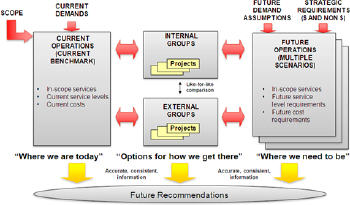Ongoing regulatory, financial and technology changes, compounded by pressure to improve service and performance while managing costs, continue to create challenges for electric, gas and water utilities, as well as telecom and cable network operators. Investments in new technologies like Smart Grid, system enhancements, and new products and services are putting greater demands on network engineering and design groups to capture and share this valuable asset information across the enterprise. In fact, proper documentation and management of network assets and information are critical success factors for high performing, top quartile companies looking to optimize their capital planning and operations investments. Companies that do not have accurate, up-to-date network asset records are potentially exposed to significant operating, financial and regulatory risks.
However, many organizations’ mapping and drawing groups have not kept pace with these changes and are challenged by aging workforce issues as well as building the longer-term capabilities and skills needed to keep pace with new GIS and mapping technologies. Overarching these issues is the need to manage ever increasing demands with ongoing budget constraints and reductions.
Given these challenges, companies are considering and pursuing alternative operating models for delivering mapping and data management services to their key stakeholders. Increased national infrastructure investments will only increase the number of internal and external stakeholders requiring asset information. Although several companies have leveraged contracting and outsourcing to supplement and address resourcing issues with mapping and drafting functions, many companies struggle in deciding how to fully leverage and realize value from using these third-party resources. Our experience shows that there are three critical success factors to getting this right:
1. Understand Strategic Activities and Skills
The opportunity to outsource some or all mapping and drafting functions is rarely understood from a financial, strategic, market or technical perspective. The first step involves conducting a detailed assessment of current and future mapping and data management processes and activities including the key skills and capabilities needed to successfully deliver these services. We recommend companies answer the following questions to develop their “right” resourcing strategy:
 |
Answering these questions provides a clear and objective picture of key “value add” areas. Our experience shows that typical mapping and data management groups spend the vast majority (potentially over 80%) of their resource time on lower strategic value, supporting activities (e.g. data entry, drawing, quality checking) rather than on activities that can add true value to the business (e.g. analytics and reporting, master data management, planning and decision support).
Once developed, this activity assessment framework can be used to “baseline” historic and current mapping resource time and costs – understanding “who” was spending what amount of time on which activities and what the total costs of performing those activities are.
As the strategy needs to be “future looking,” companies should evaluate several future state scenarios that take into account potential demand changes in the volume and type of mapping services and activities, and then quantify the skills and resources required to meet these future demands. This “to-be” evaluation should also assess potential process and technology changes that may impact required skills and resources. For example, a new GIS platform often requires new technical skills and organizational demands that range from providing additional end user training to delivering a full business process reengineering program.
2. Evaluate Alternative Internal and External Service Delivery Options and Models
Once the current baseline and future state requirements are evaluated using the strategic activity assessment, companies can identify the resource and skill gaps that need to be addressed, objectively analyze options and develop a “roadmap” on how to best address resource needs in the future. Identified gaps can range from system-related gaps in toolsets and technical skills, to process and governance improvement opportunities. Typically a mix of internal and external/temporary resources with specific skills is needed to address gaps. Figure 2 summarizes the recommended approach to fully assess and determine the best operating and sourcing approach to deliver future business requirements and close current gaps in the most cost-effective manner.
 |
As illustrated in the figure, there are several options for addressing identified operations and skill gaps. Projects and investments can be made to build, hire and develop resources internally or companies can buy/source skills and resources needed. It is important that companies properly evaluate all service delivery options, including pros, cons, costs and risks to ensure that any operating and sourcing decisions will best meet future needs.
3. Build a Compelling Case for Change
It is critical to get business stakeholder support for the strategy in order to drive implementation and acceptance of a new delivery and operating model. Taking the approach laid out in this article allows organizations to better understand and evaluate the full range of options and make an informed outsourcing decision based on an objective “apples-to-apples” comparison given the range of internal and external sourcing options available. This helps address the sensitivities around outsourcing decisions and focuses on identifying the best options and operating models for transforming and delivering mapping services in the future, with either internal resources or a combination of internal and external resources.
Companies can realize anywhere from 10% to 40%+ improvement in overall cost and quality of service for mapping and data management activities by implementing the right operating and resourcing model that leverages the most appropriate mix of internal, contract and outsourced resources. Our experience shows that companies who seek to create a better long-term service delivery model for mapping functions realize significantly improved performance and reduced costs over the longer term, more so than companies who take a tactical, short-term and “body-shopping” approach to sourcing.
Ed. note: Author Ross Smith and several of his associates will offer a webinar in our e-Learning series on how to use these techniques. A fee of $29 will be charged to attend the webinar.